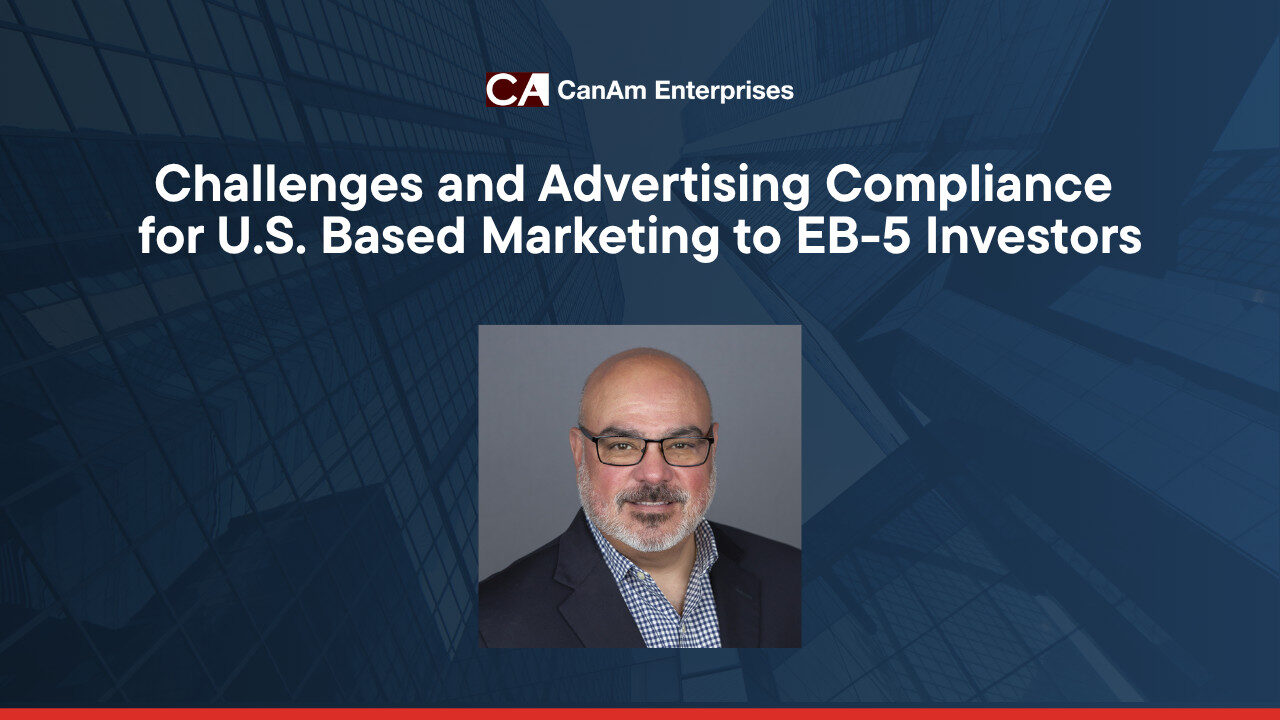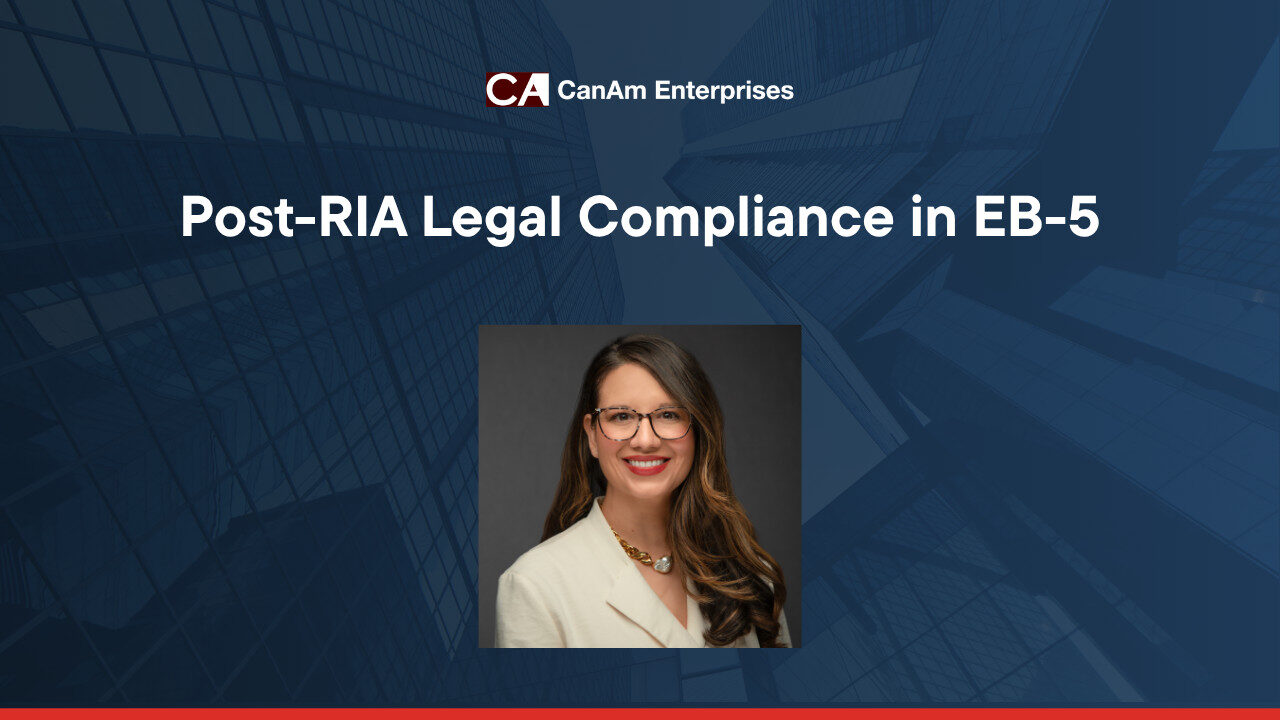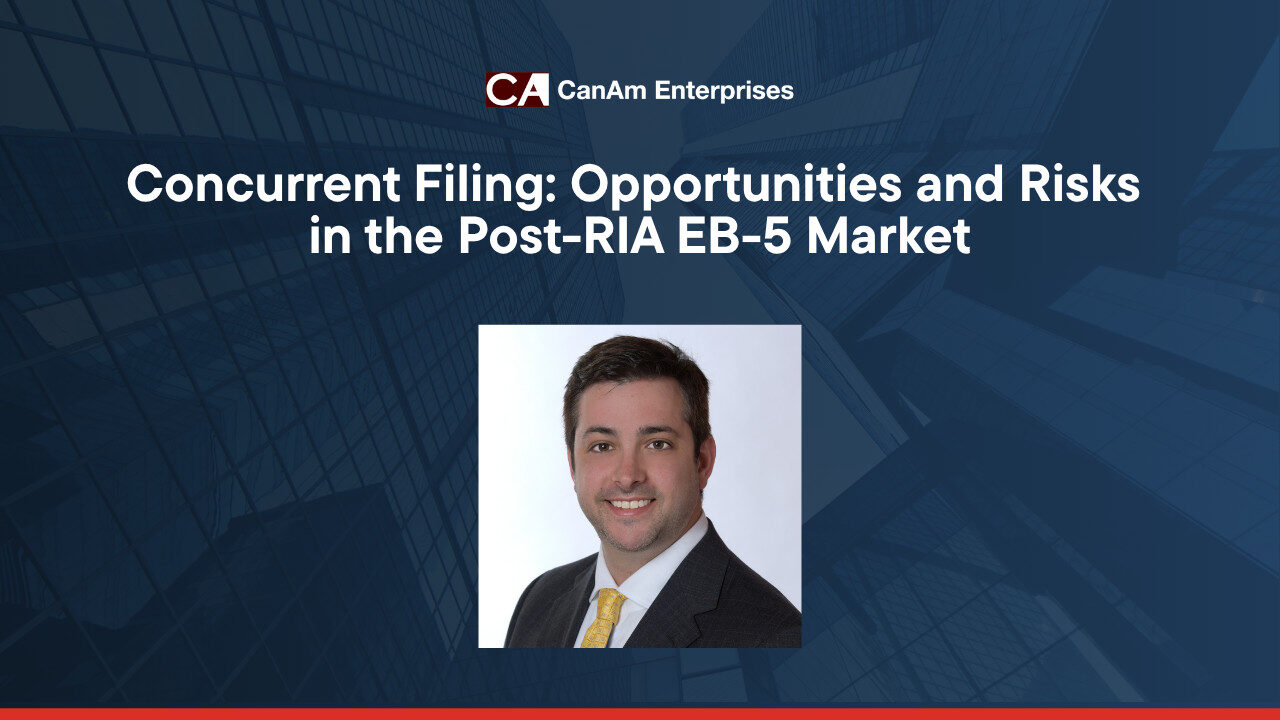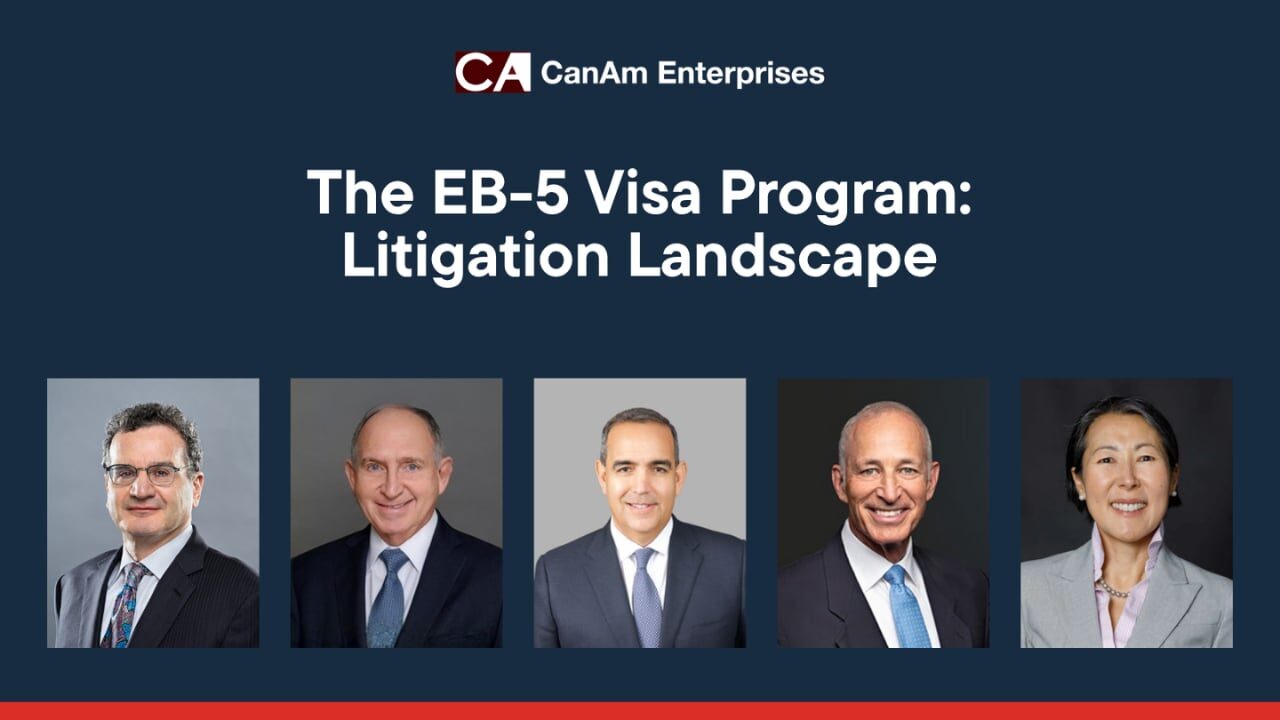Insights from Pete Calabrese, CanAm Investor Services, and Christian Triantaphyllis, Jackson Walker LLP
CanAm Investor Services CEO Pete Calabrese recently sat down with immigration attorney Christian Triantaphyllis of Jackson Walker LLP to explore the latest EB-5 adjudication and processing trends. Their in-depth discussion offered investors an invaluable roadmap through a complex and evolving immigration landscape—covering everything from I-526E petition processing to practical tips for smoother outcomes.
Here are key highlights from their conversation.
Processing Trends: Priority Timelines and Emerging Friction Points
As Triantaphyllis explained, understanding the EB-5 process begins with recognizing two distinct timelines: approval of the I-956F (project application) and I-526E (individual investor petition). Both are required before USCIS can fully adjudicate a case.
For rural projects, I-956F approvals have typically taken 10 to 11 months, with some seen as quickly as 4 to 5 months. High-unemployment urban area projects may take 12 to 15 months. Once the I-956F is approved, rural I-526E petitions are often adjudicated in 12 months, while high-unemployment urban cases are seeing approvals in 18 to 26 months.
“Priority processing is very real,” Triantaphyllis emphasized. “We’re seeing it consistently for rural projects, but HUA cases aren’t too far behind.”
Calabrese added: “While the definitions are still a bit fuzzy, priority processing does seem to mean about five to six months faster.”
One common misconception is that these two petitions—project and investor—must be filed sequentially. In fact, they can be pending concurrently. “That’s a critical point,” said Triantaphyllis. “Investors can file their I-526E while the I-956F is still in process, so long as the regional center has submitted it.”
USCIS Case Management: Common Errors and Workarounds
Triantaphyllis highlighted several recurring issues with USCIS case handling, especially for post-RIA filings, including lagging data entry, misplaced exhibits, and confusing status messages. While these issues often cause unnecessary concern, they are generally administrative and easily addressed.
“These are not red flags about your petition,” he reassured. “They’re administrative issues, not substantive concerns—but they do require attention.”
Adjustment of Status (I-485) Trends: Interim Benefits and Expectations
Concurrent filing of the I-485 alongside the I-526E petition has become a key strategy for investors already in the U.S., especially for Indian nationals. Interim benefits such as work authorization and travel permission are typically granted within 3 to 7 months.
However, Triantaphyllis cautioned that I-526E approval does not mean a green card is immediately granted. “Baseline expectations for I-485 approvals are around six months after the I-526E is approved,” he noted, “but we’ve seen them range from as little as three weeks to as long as two years.”
“These benefits are independent of the I-526E,” Calabrese emphasized. “They allow investors to live and work in the U.S. while they wait for final adjudication.”
RFE Trends: What USCIS Is Looking For
Requests for Evidence (RFEs) remain common but manageable. USCIS is particularly focused on:
- Documenting the full path of funds, especially in cases involving gifts or multi-step transfers
- Verifying earned income and employment through detailed employer letters
- Ensuring consistency in source stories, especially in partial investment filings
Understanding Partial Investments: Opportunities and Risks
As the conversation turned to emerging strategies, Triantaphyllis addressed one of the most frequently misunderstood topics among EB-5 investors: partial investments.
Filing with a partial capital contribution (e.g., $400,000 out of the required $800,000) is allowed under the EB-5 Reform and Integrity Act. This can help investors lock in their priority date and begin receiving interim benefits sooner. However, it also introduces unique documentation and timing risks.
“We go ahead and file the I-526E petition and try to document the full source of funds for all of the money—even if the investor hasn’t yet transferred all of it,” Triantaphyllis explained. “But USCIS often comes back asking for confirmation of the remaining funds, even when we’ve submitted updates.”
Calabrese added a note of caution: “It’s perfectly legal to file with less than the full investment amount, but the investor needs to understand the risks. If USCIS processes the petition quickly and the remaining funds haven’t yet been invested, that can trigger an RFE and delay adjudication.”
The key, they emphasized, is planning and consistency. “If you’re pursuing a partial investment strategy, work closely with your attorney and regional center to keep your timeline tight and your documentation consistent,” Triantaphyllis said.
Strategic Steps for New Investors: Start Smart
Both Calabrese and Triantaphyllis emphasized the importance of preparation:
- Identify your immigration attorney and regional center before moving any funds
- Don’t rush—wait until your full funding plan and supporting documents are ready
- Gather older tax records, salary verification letters, and employer references early
- Use low-activity bank accounts when possible to receive EB-5-related transfers
- Be consistent—especially in partial funding scenarios—about the source and use of funds
“Measure twice, cut once,” said Calabrese. “Prior planning saves time and headaches.”
Final Thoughts: Clarity, Patience, and Partnership
The EB-5 process continues to evolve, but smart investors can thrive with the right expectations and team. USCIS processing is improving, concurrent filing offers powerful benefits, and partial investment is a viable—but nuanced—option.
“There’s no substitute for being prepared,” Triantaphyllis concluded. “With the right legal and financial support, today’s investors can navigate this process with confidence.”
Dive Deeper Into EB-5:
- Partial EB-5 Investments: A Path to Flexibility and Early Priority Dates
- CanAm Enterprises Celebrates Landmark $2.5 Billion Repayment Milestone with Repayment of The Spiral
- F-1 vs EB-5: Weighing Your options for A Long-Term Future in the U.S.





